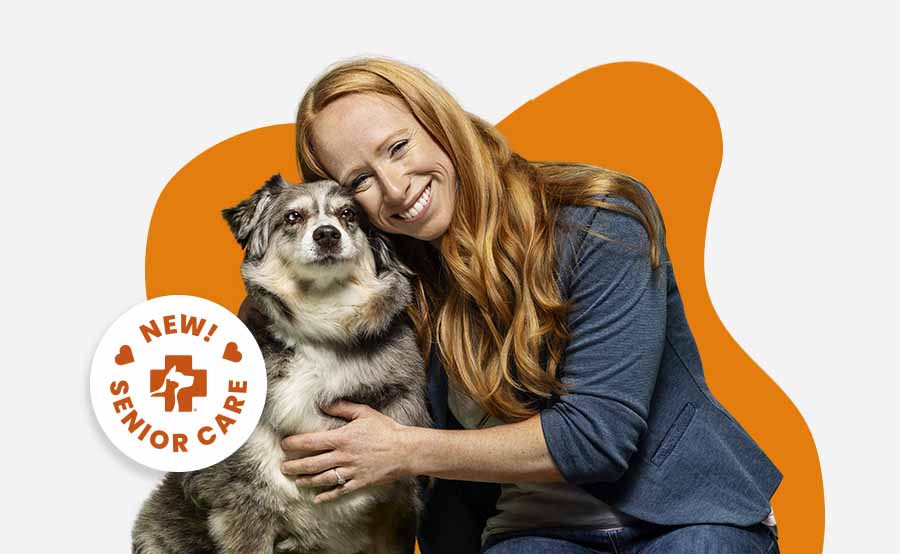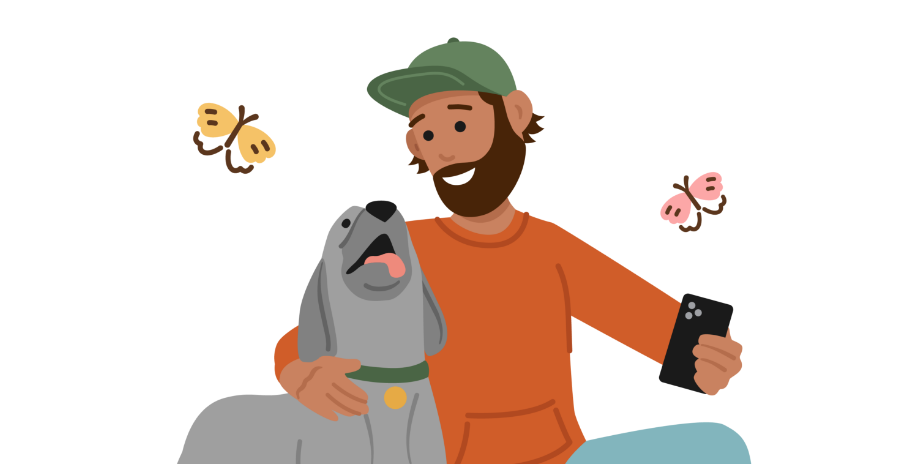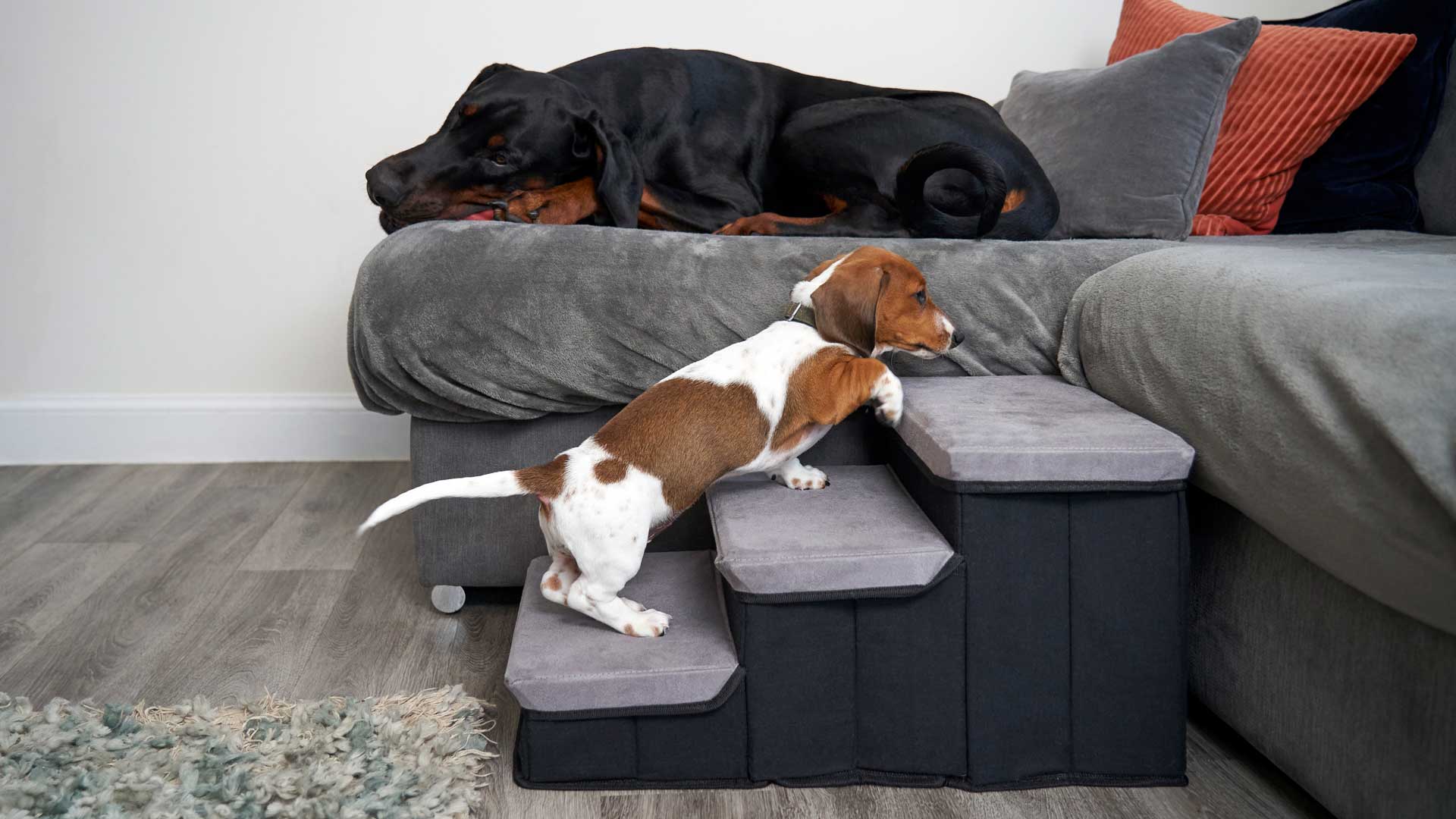obesity in senior cats and dogs
If your senior pet is slowing down or gaining weight, you're not alone. There's a lot you can do to help. This guide shows you how to tell if your pet is obese and what steps to take to get them to a healthier weight.
Obesity in senior pets is a serious medical issue — not just a cosmetic one. Excess weight increases the risk of joint pain, chronic diseases, and a shortened lifespan. Because older pets struggle more to lose weight, early intervention is critical to protect their long-term health.

Signs weight is impacting your senior pet
- Visible weight gain
- Mobility issues
- Breathing issues
- Skin and coat issues

Causes of excess weight in senior pets
- Overfeeding
- Lack of exercise
- Genetics
- Medical conditions

How to help an overweight senior cat or dog
- Make changes to diet and/or portion control
- Increase exercise
- Limit and/or change treat habits
- Talk to your vet about a weight loss program
- Talk to your vet about testing for diseases that cause weight gain
Is your senior pet overweight or obese? Here's how to tell and what to do about it
Obesity is incredibly common in pets, and extra weight can greatly affect a senior dog’s or cat’s health. It’s linked to an increased risk of arthritis, chronic joint pain, diabetes, heart disease, high blood pressure, skin problems, and even cancer.
Senior dog weight gain and excess weight on cats may not be evident in the early stages.That’s why it’s important to talk to your vet and have regular wellness exams.

How to tell if your senior cat or dog is obese
The quickest way to assess your pet is to see if you can feel their ribs and look at them from above to see if they have a waist.

Ideal weight pets
Ribs easily felt, but not seen, with an obvious waist

Overweight pets
Ribs not easily seen or felt, with unnoticeable waist

Obese pets
Ribs not felt, with absent waistline that may even bulge out
Mobility issues: Excess weight can cause your pet to have problems moving around comfortably, making them appear apprehensive about climbing, playing, etc.
Breathing issues: Excess weight can affect your senior pet’s respiratory system and cause breathing problems like panting or wheezing.
Skin and coat issues: Excess weight can lead to skin fold problems and infections and/or make it difficult for pets to groom themselves, causing fur to look unkempt.
Reasons your dog or cat might have weight to lose
Weight gain in pets can be sneaky and have you wondering how it happened. The most common reasons are overfeeding and lack of exercise, but it can also be caused by genetics and/or certain medical conditions.
It’s important to talk to your vet. They can help you determine the cause, and treatment will differ depending on the pet. A weight loss plan for a 10-year-old lab will differ from a 15-year-old cat.

Ways to help your obese senior pet
Helping your pet reach their ideal weight can improve their overall health and quality of life. Here are some ways to help your pet shed some weight.



Custom care that grows with your pet
You can save more than 30% by bundling your pet’s preventive care with an Optimum Wellness Plan. On top of comprehensive exams, vaccinations, and diagnostic testing, these convenient packages also include unlimited office visits, 24/7 Pet Chat™, discounts on most Banfield products, and more.
Our NEW Senior Care Optimum Wellness Plan includes our most in-depth diagnostic testing yet. This helps us detect changes in organ function and overall physical health, so that we can begin any recommended treatment as soon as possible.

Senior Care
Designed to help detect early signs of age-related illness
This plan combines essential services like vaccinations and exams with in-depth diagnostic testing.
See what’s included in Senior CareSenior Care Plus
Designed to help detect early signs of age-related illness and support additional dental needs
This plan includes all the services in our Senior Care plan plus a dental cleaning.
See what’s included in Senior Care Plus Mites and mange
Mites and mange Podcast - Not Just Fluff
Podcast - Not Just Fluff





